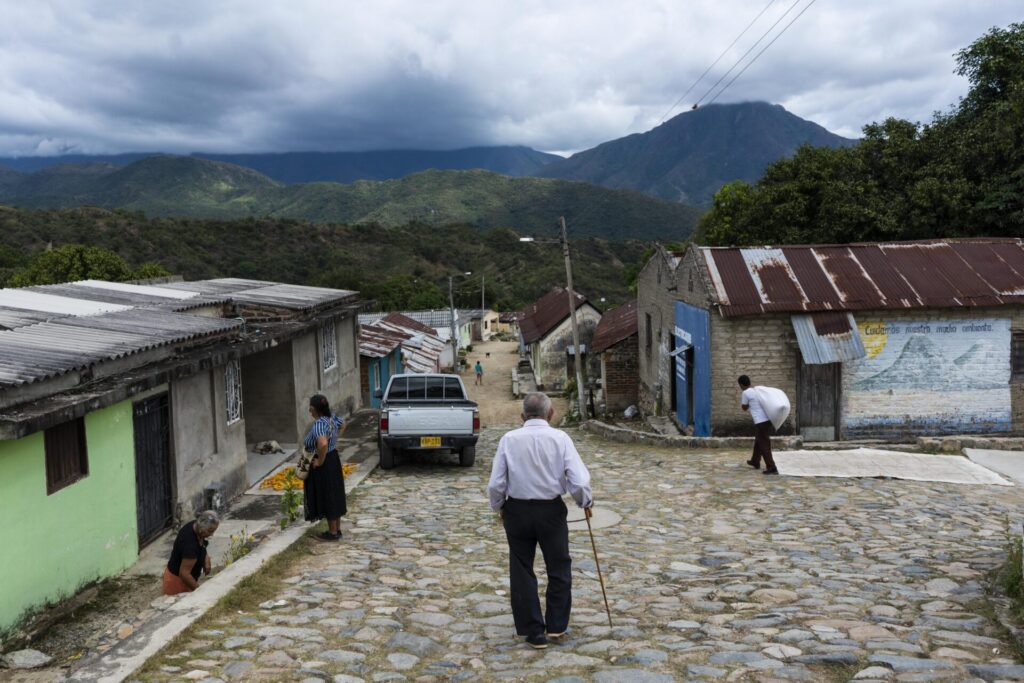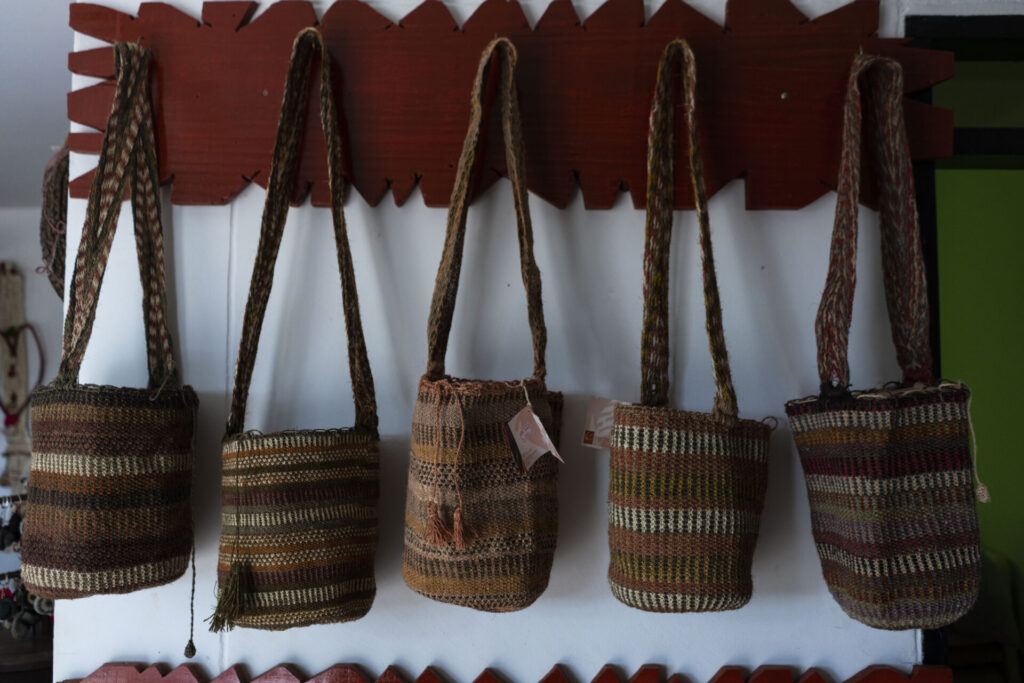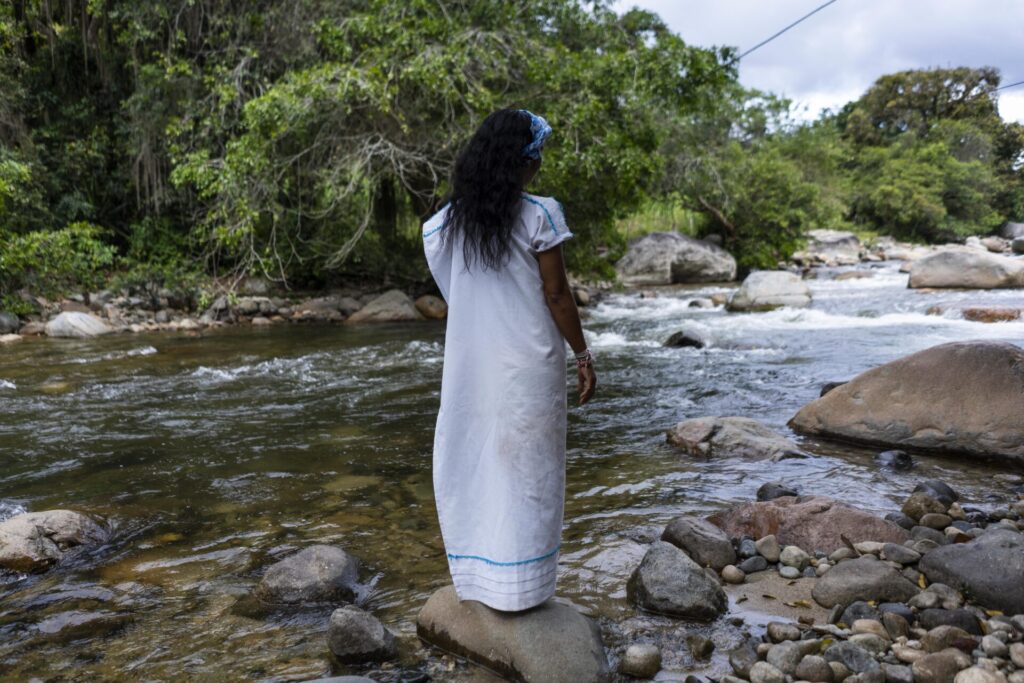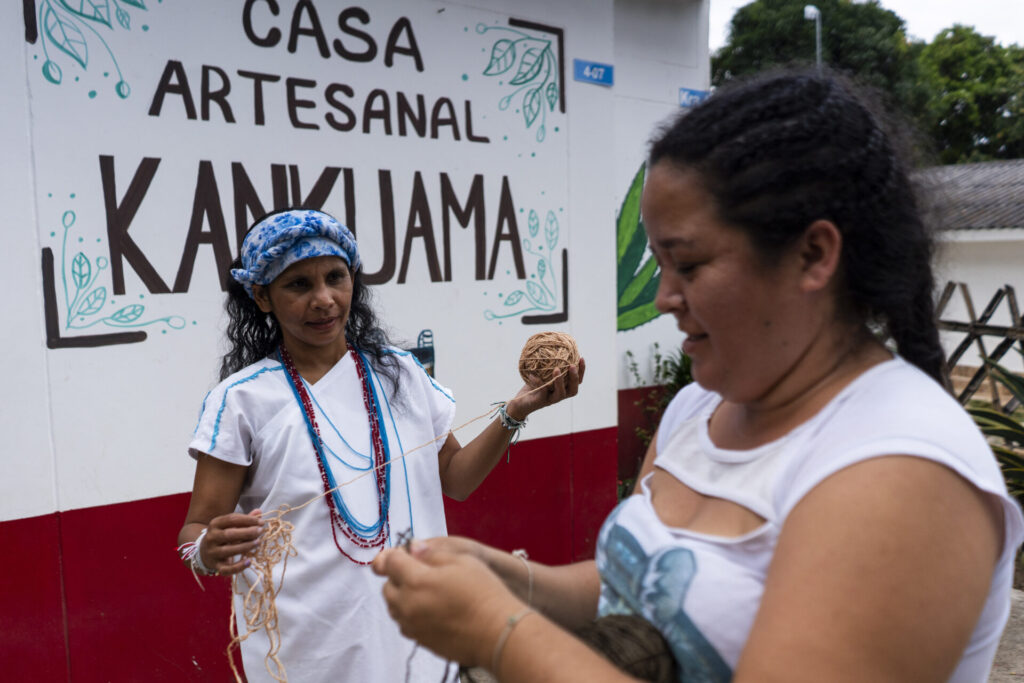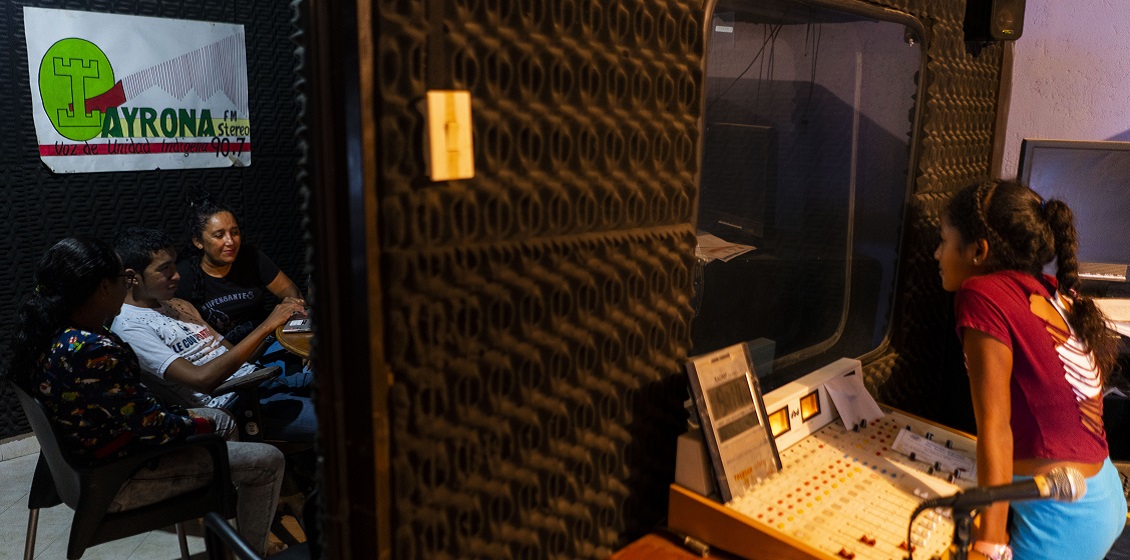Discrimination and stereotypes. Indigenous peoples are often misunderstood in the media, which is why the Kankuamo people from Colombia decided to strengthen their communication skills: to be able to tell their own stories to a broader audience. And they have done so in collaboration with a regional department of the National University of Colombia.
Entering the indigenous community of Chemesquemena as outsiders, the first thing we are led to is a big stone sharing the same name as the community, Chemesquemena, a holy place of the indigenous Kankuamo people.
We must cleanse our energy before entering, and let go of our negative experiences and preoccupations, whatever we are bringing with us. We sit, facing the big powerful stone together with Carolina Mercedes Arias, the Mayora – the elder female spiritual leader of the place.
”What worries you, how are you doing at the moment?” she asks. A bit confusing when you are mostly focused on your own interviews, and what you are going to ask her about.
She is also very much leading the way, deciding the order of the things: When I can ask which questions, and how to respect their indigenous culture and way of thinking. Well, that is what this whole visit is about, really.
Before we continue with the Kankuamos, let us take a small detour to the recently opened La Paz campus at the National University in Colombia – in the Cesar department in the northern part of the country. When the university defined the strategic lines for this department, one of the lines of research prioritized was overcoming the war and building peace in the territories.
This part of Colombia has been hard hit by decades of armed conflict, and the Kankuamo people are no exception. Their indigenous language had practically been lost as a result of many Kankuamos being victims of forced displacement. Later, they began to recover their cultural identity and ancestral knowledge using modern communication tools, such as radio and video.
Anthropologist, Professor Lucía Eufemia Meneses Lucumí, directs the Territorial Peace Laboratory at the La Paz Campus. The objective of the Laboratory is to contribute to nation-building and sustainable peace from the territories. Working with communication from indigenous people like the Kankuamo is a part of that.
Dr. Lucumí is something as rare, at least in a Colombian context, an indigenous researcher, belonging to the Nasa-people, which consists of nearly 200.000 persons originating from the departments Cauca and Huila. ”I think that all the institutions and victims’ organizations have found in the university a strategic ally that they can count on because we are impartial and for this issue of the conflict, impartiality is needed,” she says.
Indigenous culture threatened by the armed conflict
A part of the Territorial Peace Laboratory’s work is about making their communicative process visible, including managing their own TV, Radio, social media, and for example the podcast ‘El mochilón de la Sierra’, the library of Kankuamo and Chicote music.
“One of the big problems, when we think of indigenous people in the country, is thinking that all the indigenous people from the highlands are the same, and people say too much stigmatizing like these indigenous are all the same. Part of the work we have done in the Academy is to look at the details of each group, understand their histories, understand what they face and so forth, and that is done very well in the university with small groups,” says Dr. Lucumí.
Let us now return to the Kankuamo in the Chemesquemena district in the Sierra Nevada de Santa Marta. The Kankuamo resguardo consists of 13 indigenous communities. Resguardos in Colombia are collective indigenous territories according to the Constitution. The Mayora Carolina Mercedes Arias recalls the hard times they went through years back, when the armed conflict was at its highest:
”It was a very difficult time; there were guerrillas, there were paramilitariesIndi, the army was in the middle, our girls were also raped, they were also killed by one group as well as the other, it was very difficult. At that time, we had a lot of violence here in our territory. If we were up here, we could not go down, if we were down there, we could not go up. But today, we are getting over it and stronger again, as a people.” So says this female spiritual leader of the Kankuamo people.
As a result of the conflict, many Kankuamo – as well as other Colombians – were displaced from their territory. Something really painful, Arias recalls: “It was a very difficult moment in the displacement when I had to leave my territory immediately, it was not easy. But today, I thank my mother and my spiritual fathers that I feel so strengthened and so proud to have returned to my territory to strengthen our identity, the traditional part, and the spiritual part, which has been very strong for me,” she says.
And to begin to communicate their culture, to tell their story and stories using modern audiovisual media and social media, is a part of living with the trauma and strengthening their indigenous culture: “What we want is to strengthen our culture, so that there is no persecution of the indigenous peoples because we feel discriminated against. For instance, they say that those Indians up there are predators, but we are the opposite, we are caretakers of the nature of the Sierra, of the sacred sites of our culture”.
The female communicators planned five videos to tell the most important part of their culture from their own perspectives.
“The idea was to use them to strengthen our culture in the traditional part: In the part of music, in the part of handicrafts, in the part of the culture of how we used to cultivate the land. As a woman, it is also part of my role to take care of our children, and they should learn about these customs so that our customs do not disappear. So really the importance of making these stories, these videos, is to compile our history so that it does not end – so that our culture does not disappear,” says Arias.
“The idea is that one day our children, our grandchildren, will see the videos so that we continue to strengthen our culture. Let’s not be ashamed to say that we are indigenous here when we are, but we should say it with that pride. And for that reason, we ask not to be discriminated against because we are not savages, we are good people and we also deserve respect”, says Arias.
For example, one of the videos is a story of the kankuamo mochila, a type of woven bag used by everyone, and the importance of these for the recovery of the community after the armed conflict.
Just nearby the sacred stone where we were cleansed before entering the village flows the Guatapuri river. Together with Sibelis Villazon Cáceres, 39, coordinator of the indigenous women’s commission of the Kankuamo people, we take a moment here beside the water.
“One important role of the indigenous woman is this transmission of knowledge. If I want to guide my child along that good path, that is our important role, because, for us, we are territory, everything we have in our body is in the territory. That spiritual order that was left from our beginnings is what makes us different, that is why we are indigenous. Because we have to take care of the water, we have to take care of the mountains. We have to take care of the thunder. We have to take care of what we have here, it is our safeguard. For us to live well is to live with what we have. For me, as a women’s coordinator, this has been of the utmost importance,” Cáceres explains.
To her, the National University is a very important ally for them as an indigenous people:
“We are looking for a strategy, to learn and unlearn and also to empower ourselves. That’s why I feel that the advocacy that we have been doing with the university itself has also been very important. Our students who are there can also contribute to us. In this process of recovery of our culture, the alliances that we can always manage between ourselves, with those people who value and are always thinking about safeguarding the indigenous peoples, are really important. It is another way of reaching our people, our women, and our families for their own good and looking for ways to empower them with the information. Because the videos also seek to sow concern,” says Cáceres.
Communication by indigenous to avoid discrimination in the media
We visit the community’s local indigenous radio station, Tayrona Stereo, and they all talk proudly about the newly produced videos about the Kankuamo culture. The women participated on all levels, from choosing the topics to filming, interviewing, and editing. Delvis Esther Estrada Arias, 48, is the leader of the Kankuamo communication team and has participated in the creation of five videos about her culture and people. They were all directed by women.
”I think that this is very profound because we do it with all our feelings, from ourselves for ourselves, from our vision. We know what we want to bring to our people and we know how to do it so that our people understand it. I think we will understand each other better in that sense. What happens is that you know that everyone understands each other among their people, don’t you? We put in that feeling, that appropriation, that affection. It is not the same as in your village and I go and talk to them, it is not the same,” explains Arias.
She also tells about how they, as indigenous people, have experienced discrimination and misunderstandings from the local press: ”Unfortunately, I have already seen it at the local level. It’s that suddenly there are many teams of rather tabloid journalists. Well, I don’t know, there hasn’t been empathy. We have some of my local radio stations and newspapers, one could even say that they even discriminate against us and even judge us, so we don’t have confidence in these journalists anymore,” she says.
It is clear how indigenous peoples in Colombia are getting empowered. Traditionally, there is not a very strong indigenous movement in Colombia in comparison to for instance Bolivia or Ecuador, where they play an important role in national politics. Also, a much smaller part of the population is indigenous here: in Colombia, it is less than five percent.
After visiting the Kankuamo community in la Sierra Nevada de Santa Marta, I assist in an event in the La Paz department of the National University in Valledupar. One of the participants is a Mamo – a highly respected spiritual leader – from the Sierra Nevada de Santa Marta. Just seeing him wandering around on campus seems a big step toward including the country’s indigenous population in the academic world. Somehow, the spiritual way of perceiving the world seems far from the academic perspective. We are discussing how to communicate about indigenous peoples and cultures; stereotypes and the importance of having indigenous communicators. It is as if the distance from the big sacred stone and the reflections in the water of the river up in the Sierra Nevada to the University campus has all of a sudden become a lot shorter.
Lise Josefsen Hermann – a freelance journalist based in Latin America for more than a decade. She is a Pulitzer Grantee, works for the investigative media Danwatch and has published in media like Al Jazeera, BBC, Deutsche Welle, Danish Broadcasting Corporation, El Pais, New York Times, and Undark Magazine. Photos: Charlie Cordero, Sierra Nevada de Santa Marta, Colombia
